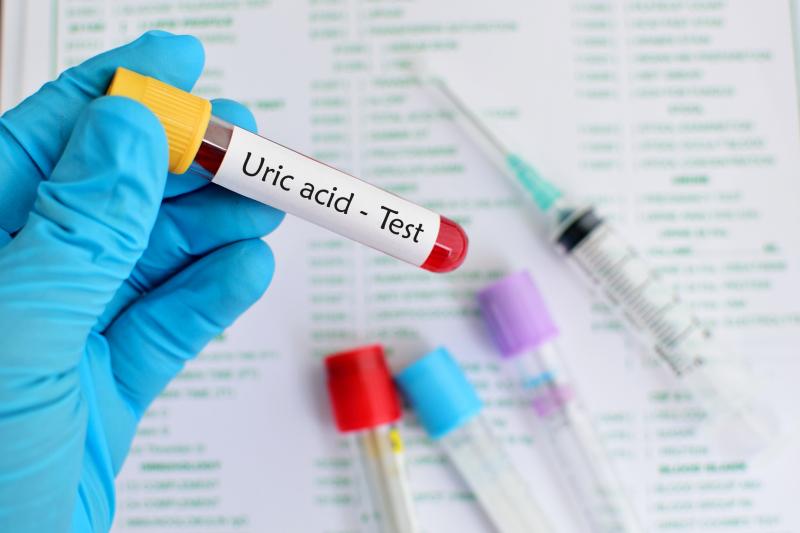
Elevated concentrations of uric acid (UA) appear to predict mortality risk in older adults, a recent study has found.
The present observational study included 624 older adults (mean age, 77.2±14.6 years; 51 percent female) with UA measurements. Hyperuricaemia was defined as UA >7 mg/dL.
The average creatinine concentration was 1.4±1.4 mg/dL, falling above the normal level range of 0.52–1.04 mg/dL. The mean UA concentration in the study sample was 6.0±2.4 mg/dL. The normal range of values for males and females was 3.5–7.0 mg/dL and 2.6–6 mg/dL, respectively.
Over the 3.5-year follow-up period, a total of 381 participants died, yielding a mortality rate of 61.1 percent. This rate was significantly higher in participants who were hyperuricaemic than in those with normal levels (69.1 percent vs 58.4 percent; p=0.004).
Kaplan-Meier survival curves confirmed that mortality rates were significantly elevated in those with UA levels >7 mg/dL (p<0.0001). Moreover, median survival for participants hyperuricaemia was significantly shorter (606 vs 1,018 days; p<0.0001).
Cox regression analysis adjusted for age further showed that the only significant and independent predictor of overall mortality was an elevated serum UA concentration (odds ratio, 1.394, 95 percent confidence interval, 1.126–1.725; p=0.002).
“Further studies are needed to address possible effects of treatment of hyperuricaemia on survival. A double-blind, long-term study comparing prognosis of patients with hyperuricaemia with and without UA-lowering treatment would be the optimal method to answer the question of treating asymptomatic hyperuricaemic patients,” said researchers.